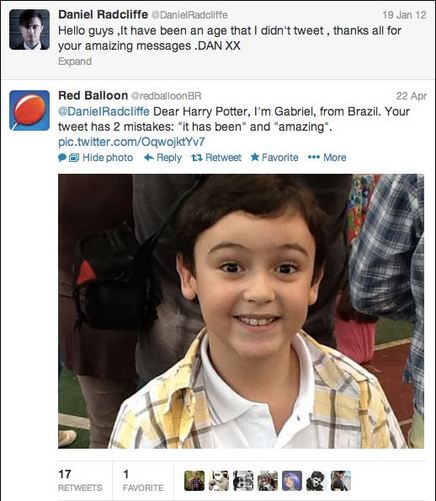The main idea that comes to mind for me with digital citizenship is that it is an interactive, contributing, and critical role. Being a digital citizen goes beyond just retrieving information and ideas from the Internet. As mentioned in Topic 1, such online activity indicates feature seekers and/or apathetic users rather than digital citizens. Digital citizenship involves interacting, sharing, evaluating, creating, and much more in the online world.
I researched Alberta’s Digital Citizenship Policy Development Guide and found myself in agreement with the views presented. The nature of the word ‘citizenship’ as “the state of being a citizen of a particular social, political or national community [and] carrying both rights and responsibilities” is seen as a strong basis for developing digital citizenship in students. Below is a summary I developed from the information in the document as a personal code on digital citizenship:
I researched Alberta’s Digital Citizenship Policy Development Guide and found myself in agreement with the views presented. The nature of the word ‘citizenship’ as “the state of being a citizen of a particular social, political or national community [and] carrying both rights and responsibilities” is seen as a strong basis for developing digital citizenship in students. Below is a summary I developed from the information in the document as a personal code on digital citizenship:
1) Work to high moral principles to effectively interact within online, time separated and geographically independent, multi-cultural, global communities
2) Balance personal empowerment and responsibility with the digital community’s well-being by being web aware and treating people, ideas, and information with respect
3) Enable participation so digital communities have value and meaning.
4) Prepare youth to participate in such communities in meaningful, responsible and caring ways.
5) Promote inclusion by fostering equal participation in digital communities
6) Guide and educate students in attaining high moral principles in their interactions in digital communities.
7) Promote ongoing conversation, debate, and inquiry on being a digital citizen in an ever-evolving society
8) Enable media advancement in accordance to community changes and needs
9) Guide students in learning how to meaningfully engage with multi-cultural, global, highly-focused and long tailed digital communities
- Alberta’s Digital Citizenship Policy Development Guide
I would demonstrate the values above in my classroom by first modelling them myself. If I create a power point presentation with images and outside sources for example, I will ensure that I have a references page attached for students to see. An idea I have in mind is to go through each value through weekly lessons and activities. For example, for value #4 on preparing youth to participate in digital communities in meaningful, responsible, and caring ways, we would discuss topics such as cyber bullying and privacy. I also would like students to create our own classroom code on digital citizenship, using what I outlined above as an example or guide. Students can then be better held accountable for their actions since they created their responsibilities themselves.
Aside from generally fostering digital citizenship in higher grades such as senior high school, it would significant to specifically discuss the aspects of authenticating sources, copyright, and plagiarism. Authenticating sources for credibility is definitely a skill students should learn, especially with the rise of social media and networking where information and ideas are easy to share. An example that comes to mind was when an online article claimed that Samsung paid Apple $1 billion in nickels for the fine of mutual patent infringement they received. The article from paperblog.com was a hoax and got many people believing instantly and sharing the news via social media. I myself stumbled across it on my facebook news feed and didn’t bother to evaluate it closely for credibility. It is thus very important to teach students how to critically authenticate their sources otherwise they fall victim to false information. Teaching senior high school students copyright and plagiarism is also significant because it will help them prepare for more complex post-secondary research and papers. Even for students going straight into the world of work, having such critical skills for referencing and sourcing information would set them apart from others.
I strongly believe educating students on digital citizenship in early grades is vital so they can learn the necessary skills and responsibilities involved. Unfortunately, teaching digital citizenship has not necessarily been a first priority in the past. Nowadays however, it is becoming increasingly important either through education or administering rules and regulations on Internet use in schools. I personally find both tasks equally important- however, administering rules and regulations without proper explanation to students is highly ineffective. Educating them on the reasons for such restrictions will definitely make digital citizenship more meaningful and purposeful. I honestly am not 100% sure on how I will find a balance between these two tasks but for now, I will focus on educating myself as best as I can on digital citizenship so I can in turn educate my students as well.
References:
Alberta Digital Citizenship Policy Development Guide. 2012. Retrieved July 19 2013 from http://education.alberta.ca/media/6735100/digital%20citizenship%20policy%20development%20guide.pdf
Samsung Pays Apple $1 Billion Sending 30 Trucks Full of 5 Cents Coins. Aug 28 2012. Retrieved July 19 2013 from http://en.paperblog.com/samsung-pays-apple-1-billion-sending-30-trucks-full-of-5-cents-coins-294795/
Significant Comments:
http://ed4764muirhead.weebly.com/1/post/2013/07/web-awareness-ii-digital-citizenship.html#comments (Laura)
http://missraychert.weebly.com/1/post/2013/07/topic-9-web-awareness-part-2.html#comments (Kristin)
Aside from generally fostering digital citizenship in higher grades such as senior high school, it would significant to specifically discuss the aspects of authenticating sources, copyright, and plagiarism. Authenticating sources for credibility is definitely a skill students should learn, especially with the rise of social media and networking where information and ideas are easy to share. An example that comes to mind was when an online article claimed that Samsung paid Apple $1 billion in nickels for the fine of mutual patent infringement they received. The article from paperblog.com was a hoax and got many people believing instantly and sharing the news via social media. I myself stumbled across it on my facebook news feed and didn’t bother to evaluate it closely for credibility. It is thus very important to teach students how to critically authenticate their sources otherwise they fall victim to false information. Teaching senior high school students copyright and plagiarism is also significant because it will help them prepare for more complex post-secondary research and papers. Even for students going straight into the world of work, having such critical skills for referencing and sourcing information would set them apart from others.
I strongly believe educating students on digital citizenship in early grades is vital so they can learn the necessary skills and responsibilities involved. Unfortunately, teaching digital citizenship has not necessarily been a first priority in the past. Nowadays however, it is becoming increasingly important either through education or administering rules and regulations on Internet use in schools. I personally find both tasks equally important- however, administering rules and regulations without proper explanation to students is highly ineffective. Educating them on the reasons for such restrictions will definitely make digital citizenship more meaningful and purposeful. I honestly am not 100% sure on how I will find a balance between these two tasks but for now, I will focus on educating myself as best as I can on digital citizenship so I can in turn educate my students as well.
References:
Alberta Digital Citizenship Policy Development Guide. 2012. Retrieved July 19 2013 from http://education.alberta.ca/media/6735100/digital%20citizenship%20policy%20development%20guide.pdf
Samsung Pays Apple $1 Billion Sending 30 Trucks Full of 5 Cents Coins. Aug 28 2012. Retrieved July 19 2013 from http://en.paperblog.com/samsung-pays-apple-1-billion-sending-30-trucks-full-of-5-cents-coins-294795/
Significant Comments:
http://ed4764muirhead.weebly.com/1/post/2013/07/web-awareness-ii-digital-citizenship.html#comments (Laura)
http://missraychert.weebly.com/1/post/2013/07/topic-9-web-awareness-part-2.html#comments (Kristin)


 RSS Feed
RSS Feed